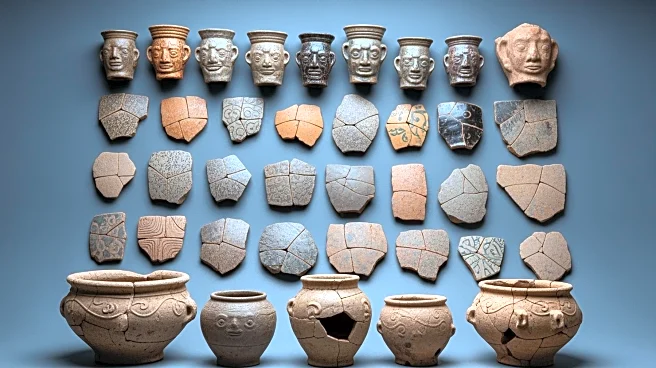What's Happening?
A recent study published in Scientific Reports has unveiled new methodologies for assessing the stability and potential reuse of abandoned quarry caverns. The research focused on the geological hazards
and stability of hard rock mined caverns at a large artificial quarrying site in China. By employing field investigations, numerical simulations, and structural modeling, the study provides insights into the mechanical behavior and failure mechanisms of these caverns. The findings emphasize the distinct characteristics of hard rock caverns, which differ from coal mine goafs in terms of geometry and stress distribution. The study highlights the importance of understanding these caverns' behavior for their safe and sustainable reuse, particularly in urban and rural development.
Why It's Important?
The study's findings are significant for regions with extensive mining activities, as they offer a framework for transforming abandoned mining sites into safe and functional spaces. This research is particularly relevant for areas transitioning from mining to urban or tourism development. By identifying stress concentration zones and potential failure modes, the study provides a basis for implementing monitoring and reinforcement strategies. The use of advanced technologies like UAV photogrammetry and 3D laser scanning enhances the precision of these assessments, supporting informed decision-making in post-mining land management. This approach could lead to safer and more sustainable land use practices, benefiting local communities and economies.
What's Next?
Future research is expected to focus on establishing standardized evaluation protocols for these caverns, considering factors like hydrogeological conditions and seismic activity. The study suggests that continuous monitoring and targeted reinforcement are necessary to prevent progressive failure in identified unstable zones. As mining regions seek to repurpose abandoned sites, these insights will be crucial for developing effective hazard mitigation strategies. The integration of remote sensing and numerical modeling will continue to play a vital role in understanding and managing the complexities of these structures.
Beyond the Headlines
The study underscores the potential for abandoned mining sites to be repurposed for urban development or tourism, highlighting a shift towards more sustainable land use practices. This transformation not only addresses safety concerns but also opens up new economic opportunities for regions previously dependent on mining. The research also points to the need for interdisciplinary approaches, combining geology, engineering, and technology, to tackle the challenges of post-mining land management.











